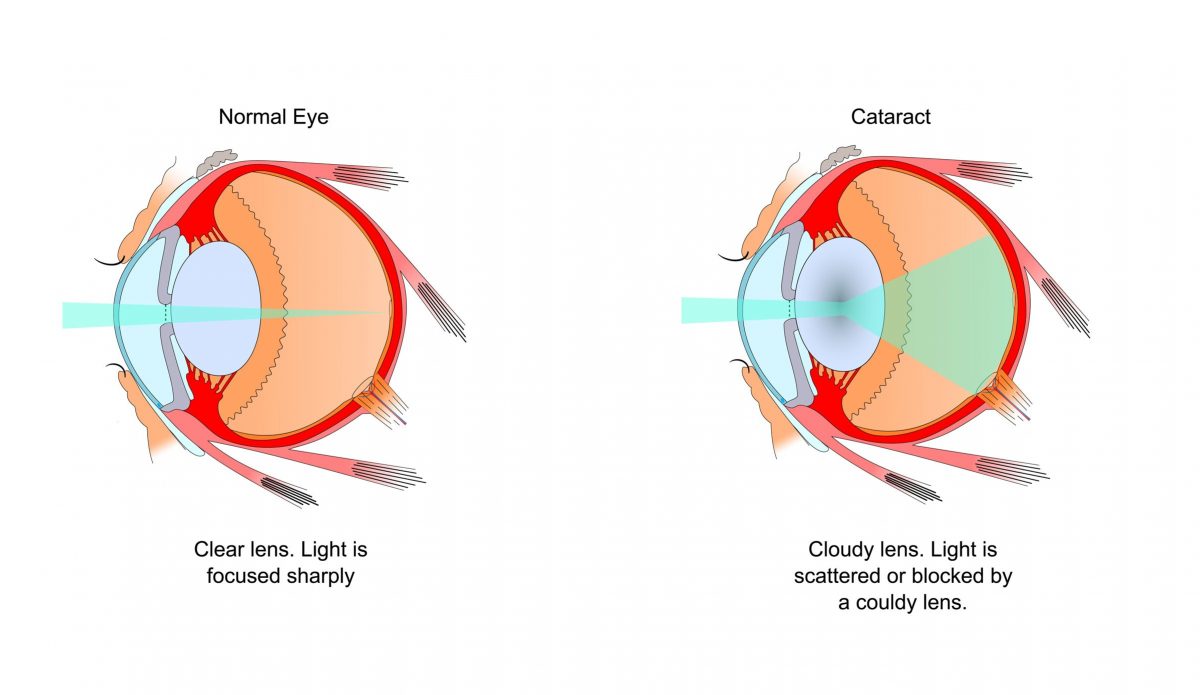Cataracts
Cataracts occur when the lens of your eye, which is normally clear, becomes cloudy or opaque. Light that passes through the lens becomes scattered and diffuse, leading to blurred vision, light sensitivity, and more trouble differentiating colors and seeing in low contrast situations.

Cataracts can result from a number of reasons, but there is no single cause for cataract formation. Injury and trauma to the eye can cause cloudiness to form in the lens as part of the repair process. Prolonged exposure to ultraviolet light can cause darkening of the lens, contributing to cataract formation during older age. Diseases such as diabetes and hypothyroidism have also been strongly linked to cataracts, making regular eye exams important for anyone diagnosed with such conditions.
Cataracts are initially treated by changing the prescription of glasses or contact lenses. When this correction becomes insufficient to allow a normal lifestyle, cataract surgery is recommended. During surgery, the doctor creates a micro-incision in the surface of the eye. The lens containing the cataract is then broken down and removed, and an intraocular lens (IOL) is implanted in its place. These artificial lenses can correct for a person's nearsightedness and/or astigmatism, depending on the type of IOL, and often provide excellent vision in the post-surgical eye.
Patients undergoing cataract surgery can expect to be back to normal activity by that afternoon or the next day. Please note, however, that the vision in the surgical eye will change in the following weeks as the eye adjusts to the IOL. Some sensitivity to light and scratchiness of the eye is normal after the surgery, and can last several weeks.
Learn about laser assisted cataract surgery here →
Intraocular Lenses
When a cataract becomes mature enough to impede daily life, the prevailing surgical option is to remove the natural lens in exchange for an artificial intraocular lens (IOL). Modern IOLs not only replace the natural lens' functions, but can correct for existing nearsightedness, farsightedness, and astigmatism, eliminating the need for glasses and contacts in many patients. Several different types of IOLs are available, but may not be prescribed depending on each patient's circumstances.
Monofocal Lens
The standard type of IOL, a monofocal lens corrects for nearsightedness or farsightedness. The vast majority of insurance plans will only cover the cost of a monofocal lens.
Toric Lens
A toric lens is a premium IOL that is not likely to be covered by insurance, but has the ability to correct for corneal astigmatism, offering better visual acuity for astigmatic patients.
Multifocal Lens
A multifocal lens is also a premium IOL that has the ability to correct near and far vision. Multifocal IOLs help eliminate the need for eyeglasses after surgery.